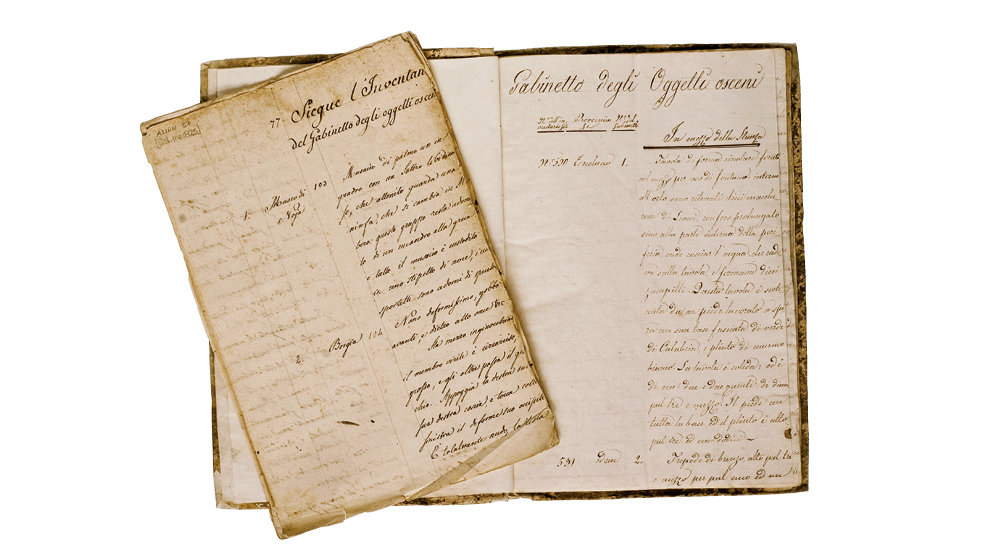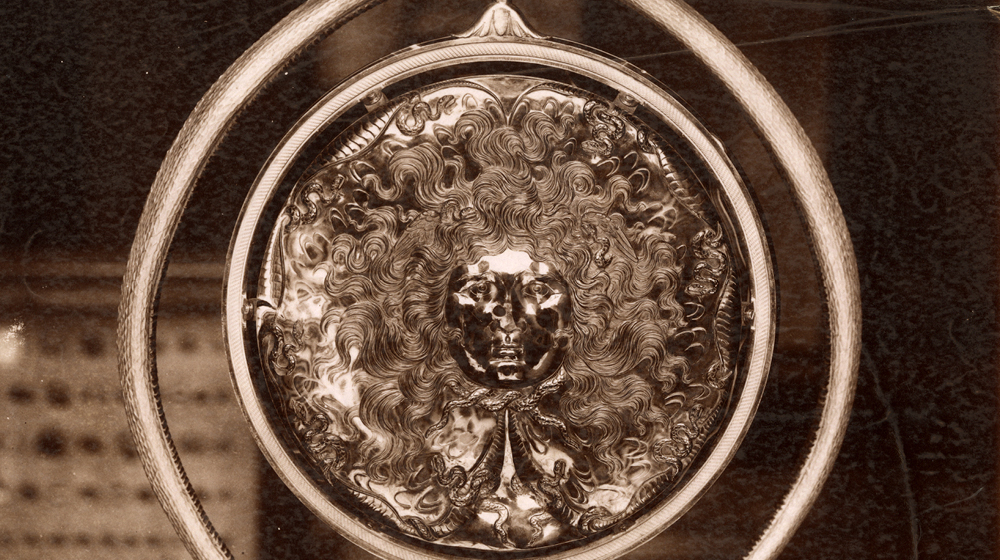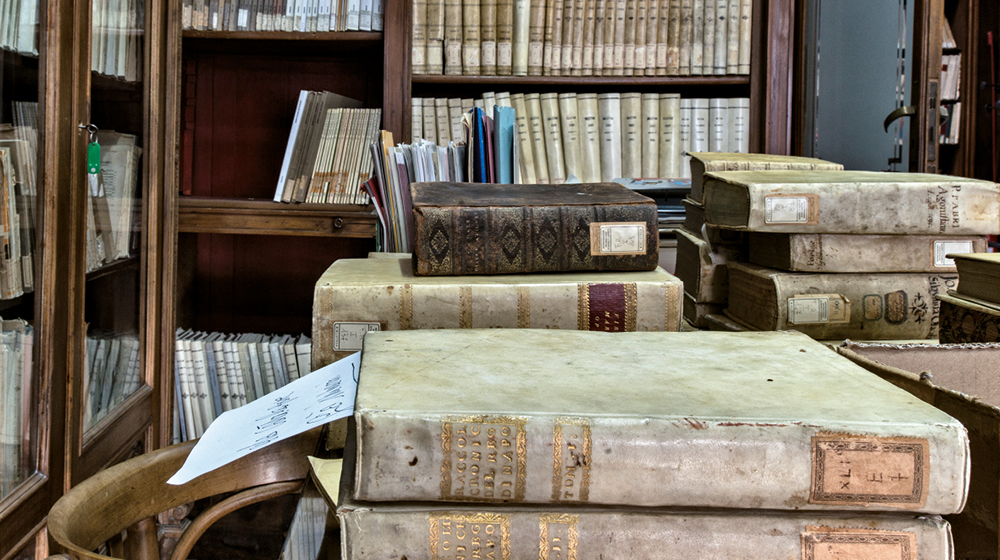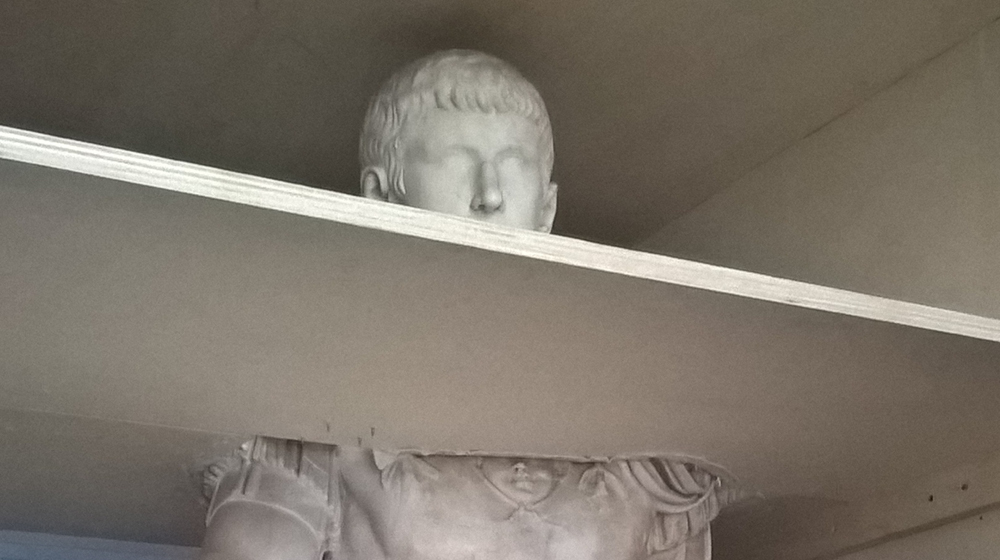scientific services

Studies and research
The rich archaeological and artistic heritage of the Museum, either on display or stored in the warehouse has grown over more than two centuries, through the excavations campaigns promoted in the regional area, as well as through the acquisitions of more or less important private collections, or purchases and donations of single objects. This immense heritage, which is constantly monitored, is the basis for both the permanent collections and the temporary exhibitions of the Museum, it is shared with other Italian and foreign institutions through the loan system and it is also an important source of ongoing studies and research. The Museum promotes the research, cataloguing, conservation, restoration, classification, exhibition and study of its heritage, both material and immaterial one. In order to pursue these institutional objectives, as well as to develop coordinated scientific research, in line with the fields of research promoted and developed by the Museum, the director and all the curators analyze all study and research projects, including those aimed at completing university degrees and phd, applying to study archaeological and historic-artistic objects included in the heritage of the Museum, with a rigorous assessment process, before signing any authorizazion. These authorizations are regulated by the current Guidelines. Once the authorization has been signed, an official will be appointed to follow the whole procedure and to give scientific assistance at the Museum or by mail.
Archaeologists:
Laura Forte
Marialucia Giacco Floriana Miele
Emanuela Santaniello Giovanni Vastano
Art Historian:
Andrea Milanese
—
Check the Guidelines for obtaining the authorization to study archaeological, historic and artistic objects of the Museum heritage
man-na@beniculturali.it

CATALOGUE
The Catalogue Office is in charge of registering, cataloguing and documenting the movable archaeological heritage of the Museum, in accordance with the methodologies and the standards outlined by the Central Institute for Cataloguing and Documentation (ICCD). The catalogue is made up of paper and digital registers of records, concerning the movable archaeological objects of the Museum, which must be constantly updated and reviewed. It also boasts a substantial archive, containing about 50.000 paper catalogue descriptions and 55.000 digital ones, concerning movable archaeological objects, like coins, gemstones, inscriptions, 18th and 19th century carved moulds, antique prints, drawings and photographies, together with another group of paper and digital descriptions of monuments and archeological sites, which are integrated in the information technology system of the Centro Regionale di catalogo dei Beni Culturali della Campania (CRBC) and, since 2014, also in the information technology system of the national SIGEC WEB of the ICCD. The Catalogue Office offers tutoring services to university students, provided the university has signed a convention with the Museum, and gives advice and help to Museum staff, as well as to external scholars, in order to make a search in the catalogue archives and registers of records. Moreover, a general scientific assistance is granted to all Italian and foreign researchers, studying Museum archaeological heritage.

Museology and historic documentation office
This office in in charge of enhancing the value of the history of the Museum, studying and cataloguing its vast related heritage (historic archive, drawings archive, antique furniture and modern art objects).
HISTORIC ARCHIVE
The Historic Archive holds the documents related with the origins of the Royal Museum of Naples and the Superintendence to the Antiquities of the Kingdom, which is the one of the most ancient museums and heritage protection institutions in Europe, characterized by many transformations over the centuries, both in the title and in the range of action: Royal Bourbon Museum (1816), National Museum (1860), finally National Archeaological Museum (1957). The documents, dating back from the mid-18th century to about 1920, account for all fields of activities: from the study of Museum galleries, including the Picture Gallery, passed on to the collections of Capodimonte Museum only in 1957, to the overview of the artistic market and the exports, as well as of the excavation campaigns, promoted in many locations of Campania and the South of of Italy (starting from the famous ones, at Pompeii, Herculaneum and Stabiae). The Archive, completely digitilised in a data-base, currently consists of 12.500 booklets, with attached 300 drawings and 800 photographs. Moreover, 180 manuscripts, which contain the Bourbon Museum’s historic inventories of records are part of the heritage.
Drawings Archive
The Drawings Archive - currently under reorganization and cataloguing, holds about two thousands works among water-paintings, pencil drawings, tempera paintings and other graphic materials related with the history of the building, the heritage it houses and various excavations areas.
The staff of the Museology and Historic documentation Office is in charge of studying and cataloguing the heritage held by the office; they offer tutoring services to university students, provided the university has signed a convention with the Museum; they give scientific advice and help either onsite or by mail, to national and international scholars, and they carry out research aimed at supporting various projects, such as temporary exhibitions, galleries set up renovations or conservation interventions.

PHOTOGRAPHIC ARCHIVE OFFICE
The Photographic Archive holds a unique heritage of negatives and positives related both to the Museum’s collections as well as to the archaeological areas of the Campania region, or more in general to Southern Italy, dating back from the second half of the 19th century to recent times. It can be considered an essential source, also in order to retrace the history of the Museum’s collections and set-ups, as well as the territorial evolution before and after the unification of Italy. Among the most precious collections, from a documental value point of view, the group of 15.000 glass film negatives stands out. They date back to the first decades of the 20th century and they focus on the Museum collections and the archaeological sites included in the area covered by the Superintendence. Another unique collection is represented by 1500 photographs, captured by some of the most respected photographers, such as, Anderson, Brogi, Sommer, Mauri e Lembo, resulting in the Archive being an incredible testimony of the evolution of Italian photography. The staff of the Photographic Archive Office is in charge of archiving and cataloguing the photographic materials, including digital ones, and periodically surveying their state of conservation; the staff gives scientific advice and help either onsite or by mail, to national and international scholars, and carry out research aimed at supporting Museum’s projects, such as temporary exhibitions, galleries set ups or conservation interventions. When requested, professional photographers shoot new photography of Museum objects for scholars and exhibition purposes all around the world. All requests for image licensing and film licensing are processed by this office, which abide by the current MANN Regulation.
Laura Forte —
Check the Image reproduction - Terms and Conditions
WORD form
download the form for image reproduction and use/ filming and shooting request
PDF form
WORD form
PDF form
WORD form
man-na@beniculturali.it

LIBRARY
The collections of the Museum Library focus on classic archaeology and other topics related with the study of ancient civilizations. Moreover, they largely document the activities carried out for the protection, promotion, research and display of the Museum’s and the Superintendence until 2015, when the Museum has been provided with its own administrative, economic and scientific autonomy. The Library, with its more than 40.000 volumes, including a precious section of about 5000 books spanning from the 16th to the 19th century, as well as 643 magazines, 74 of which are still publishing, is a unique heritage, that is still being enhanced by new acquisitions, exchanges and donations. A small section of graphic materials, as well as some electronic resources are also part of the Library, which has started the digitalization of rare and very antique editions. Some special collections, which belong to the Museum Library are: the Medagliere Library (made up by 2000 books devoted to numismatics, accessible for reference by appointment only), the collection Olga Elia and the collection Zancani Montuoro ( made up by 3000 publications). Since 2006, the Museum Library has joined the Servizio Bibliotecario Nazionale (SBN): volumes can be searched online through the national OPAC SBN catalogue or the personal OPAC catalogue.
The Library staff is in charge of registering and cataloguing the documentary heritage, as well as of buying and exchanging old and new publications, preserving and restoring the volumes, with a special attention to the digitalization process. Another important aspect of the work carried out by the staff is the safeguarding and enhancing of the unique 19th century precious style of the library, with all its historic furniture. The Library is provided with a study room for reference books.
Andrea Milanese
—
The Library and its study room are open from Monday to Thursday from 9.30 to 3.00 pm. Booking in advance is necessary, writing to
man-na.biblioteca@cultura.gov.it
man-na@beniculturali.it

LOAN SERVICE
The service deals with loan requests of Museum pieces, submitted by public and private institutions, either Italian or foreign ones, for exhibition purposes. Requests are reviewed and a decision is made upon the assessment of the scientific project, as well as the technical documentation available on venues, display conditions and security systems (Facility Report). The guarantee of the return of the items to Italy at the end of the exhibition and the insurance policy are two essential conditions for the loan to be agreed upon. The Conservation Department cooperates in the procedure, being in charge of assessing the conditions of requested items and preparing or restoring them, when necessary, before travelling. Experienced Museum staff collect materials from the galleries or, more often, from the warehouse, and supervise packing operations, as well as the preparation of the objects in the exhibition venue. Crating and shipping operations, instead, are run by highly specialized companies. A fee is expected to be paid, depending on the number of works, their importance and the loan duration, in compliance with a specific contract agreed upon by the Museum and by the prospective borrower.
Marialucia Giacco
man-na@beniculturali.it

Conservation department
The Conservation department is organized in five different sections: Mural paintings and Mosaics; Stone materials; Pottery, Glass, Organics; Metals and Exhibitions documentation. Restorers of the MANN work for the conservation, the restoration and the preparation of archaeological materials, both for Museum’s internal needs and initiatives, as well as for temporary exhibitions in Italy and abroad. In order to fullfill this objective, restorers closely interact with curators of Studies and Research and Loan offices. Thanks to specific agreements, the office provides tutoring and logistic support to Italian and foreign students, who are authorized by the Direction to collaborate with the different Sections. Students are also offered support for their final thesis project focused on restoration as well as in the learning process of restoration techniques and methodologies. The Department cooperates with Italian and foreign Universities and Research Insitutes sharing projects aimed at the study, conservation, promotion and restoration of the archaeological heritage of the Museum. The staff carries out documented research, drafting of conservation reports, surveys and technical evaluations aimed at planning ordinary and extraordinary
Mariateresa Operetto
man-na@beniculturali.it

Publications
The Museum carries out an intense scientific activity which translates into a series of publications concerning permanent collections, single works of art and temporary exhibitions. These publications can be purchased at the Museum bookshop or on the online shop, both run by the company Electa-Mondadori, in addition to all other eventual bookshops and websites.
Moreover, some of the publications can be downloaded in pdf version, free of charge.
The Museum also promotes children books. Some are free of charge, some others are on sale.